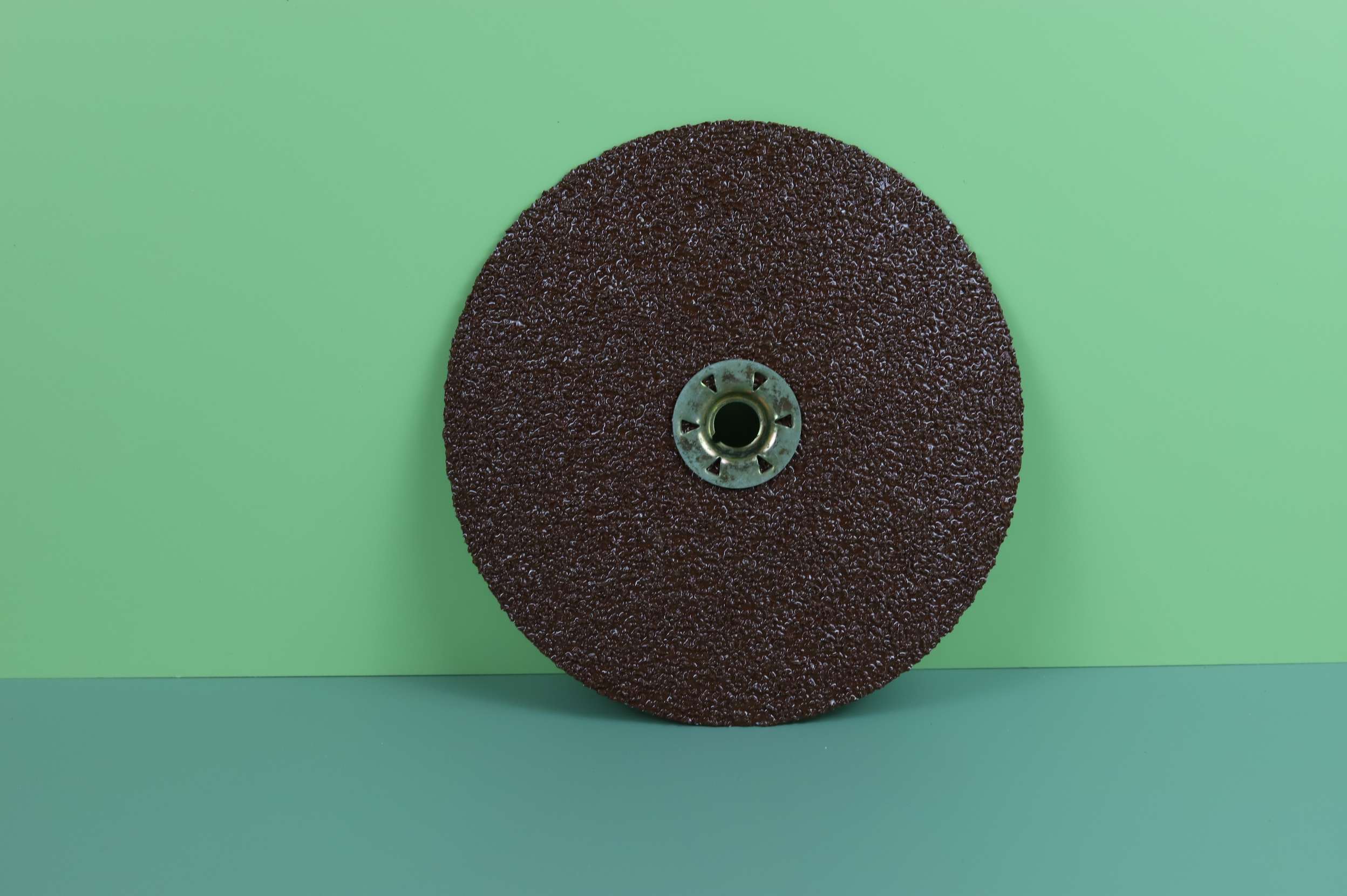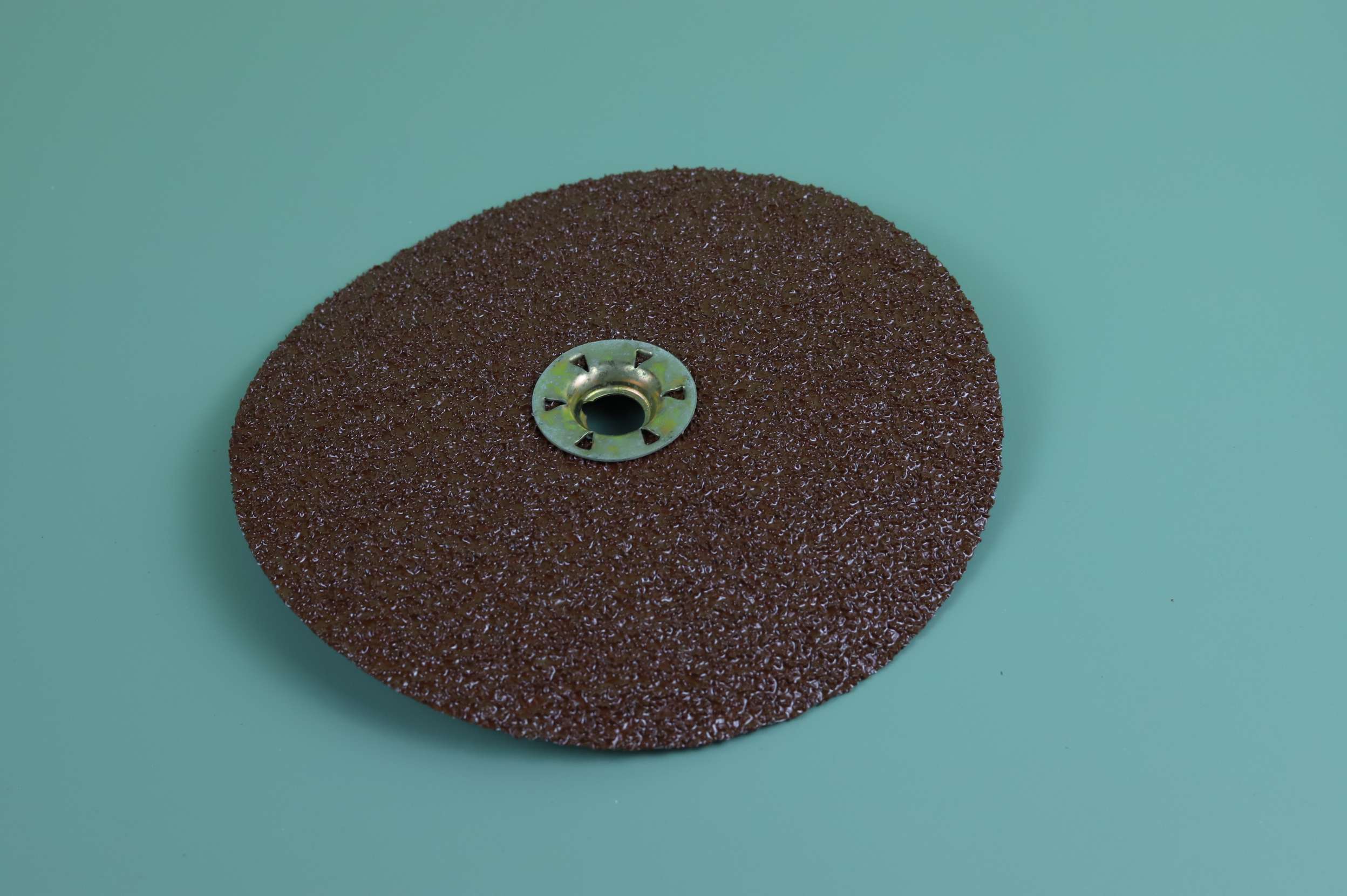Selecting the right disco in fibra grit is crucial for achieving optimal results in metalworking and woodworking projects. The correct choice can enhance the efficiency and quality of your work, while the wrong choice can lead to subpar finishes, wasted time, and even damage to the material or tools. This comprehensive guide will explore the various factors that should be considered when selecting the appropriate fiber sanding disc grit, including material type, desired finish, grit types, and application techniques.
Understanding Fiber Discs
Fiber discs are abrasive products used for grinding, blending, and finishing applications. They are composed of abrasive grains bonded to a fiber backing. These discs are widely used in industries such as automotive, metal fabrication, and woodworking. The backing material provides strength and flexibility, allowing the disc to conform to the surface being worked on, which is essential for achieving a uniform finish.
Components of Fiber Discs
- Abrasive Grains: The abrasive grains on a fiber disc are the cutting agents. They come in different types, including aluminum oxide, zirconia alumina, ceramic alumina, and silicon carbide. Each type of grain has specific properties that make it suitable for particular applications.
- Bonding Agent: The bonding agent holds the abrasive grains in place on the fiber backing. The strength and durability of the bond affect the disc’s performance and lifespan.
- Fiber Backing: The fiber backing provides the necessary strength and flexibility. It is typically made from vulcanized fiber, which is a tough, durable material that can withstand the rigors of grinding and finishing operations.
Types of Abrasive Grains
Understanding the different types of abrasive grains is essential for selecting the right fiber disc grit. Each type of grain has unique properties that affect its performance and suitability for specific tasks.
- Ossido di alluminio: This is the most common type of abrasive grain. It is durable and versatile, making it suitable for a wide range of applications, including grinding, blending, and finishing. Aluminum oxide is particularly effective on ferrous metals, wood, and plastic.
- Zirconia Alumina: Known for its toughness and long life, zirconia alumina is ideal for heavy-duty grinding and stock removal. It is commonly used on stainless steel, carbon steel, and alloy steel. Zirconia alumina self-sharpens, providing a continuous cutting action.
- Ceramic Alumina: Ceramic alumina is a high-performance abrasive grain that offers superior cutting power and durability. It is designed for aggressive grinding applications on hard materials like stainless steel, titanium, and high-nickel alloys. Ceramic alumina grains are micro-fracturing, meaning they break down into smaller, sharp edges, maintaining their cutting efficiency.
- Carburo di silicio: This grain is sharp and brittle, making it suitable for non-ferrous metals, glass, stone, and ceramics. Silicon carbide provides a high-quality finish and is often used for fine-grinding and polishing applications.
Grit Size and Its Importance
Grit size refers to the size of the abrasive particles on the fiber disc. It is typically measured in microns or mesh numbers. The grit size determines the cutting action and finish quality of the disc. Lower grit numbers indicate coarser abrasives, which are more aggressive and suitable for heavy stock removal. Higher grit numbers indicate finer abrasives, which produce a smoother finish.
Common Grit Sizes and Their Applications
- 24-36 Grit: Coarse grits like 24 and 36 are used for heavy stock removal and rough grinding. They are ideal for removing welds, rust, and scale, as well as shaping and beveling edges.
- 40-60 Grit: Medium grits in the 40 to 60 range are used for general-purpose grinding and blending. They can remove material efficiently while leaving a relatively smooth surface. These grits are suitable for preparing surfaces for painting or coating.
- 80-120 Grit: Fine grits in the 80 to 120 range are used for finishing and polishing. They produce a smooth surface that is ready for final finishing or painting. These grits are commonly used in woodworking and metal finishing applications.
- 150-240 Grit: Very fine grits like 150 to 240 are used for fine finishing and polishing. They produce a high-quality, smooth finish on metal, wood, and plastic surfaces.
- 320 and Above: Ultra-fine grits (320 and above) are used for polishing and achieving mirror-like finishes. These grits are used in applications where a high level of detail and smoothness is required, such as in automotive refinishing and fine woodworking.

Factors to Consider When Selecting Fiber Disc Grit
Choosing the right fiber disc grit involves considering several factors, including the material being worked on, the desired finish, and the specific application requirements. Here are some key factors to consider:
Material Type
The type of material you are working on significantly influences the choice of grit. Different materials have varying hardness and surface characteristics, requiring specific abrasive grains and grit sizes.
- Metal: When working with metals, the choice of grit depends on the type of metal and the desired finish. Coarse grits are suitable for heavy stock removal and weld removal, while finer grits are used for finishing and polishing. For stainless steel and other hard metals, zirconia alumina or ceramic alumina grains are recommended.
- Wood: In woodworking, the choice of grit depends on the type of wood and the stage of the project. Coarse grits are used for initial sanding and shaping, while finer grits are used for smoothing and finishing. Aluminum oxide is commonly used for wood applications.
- Plastic: When working with plastics, it’s important to use finer grits to avoid scratching or melting the material. Silicon carbide is often used for plastic applications due to its sharp cutting action.
- Glass and Ceramics: For glass and ceramic materials, silicon carbide is the preferred abrasive grain. Finer grits are used to achieve a smooth, polished finish.
Desired Finish
The desired finish also plays a crucial role in selecting the right grit. Consider the level of smoothness and surface quality you want to achieve.
- Rough Grinding: For rough grinding and heavy stock removal, coarse grits (24-36) are recommended. These grits can quickly remove material and prepare the surface for subsequent finishing steps.
- Blending and Smoothing: Medium grits (40-60) are suitable for blending and smoothing surfaces. They can remove scratches and imperfections left by coarse grits, creating a smoother surface.
- Finitura e lucidatura: Fine grits (80-120) are used for finishing and polishing. They produce a smooth, even surface that is ready for final finishing or coating. For high-gloss finishes, very fine grits (150 and above) are used.
Application Techniques
The techniques used in your application can also affect the choice of grit. Consider the following factors:
- Machine Speed: The speed of the machine can influence the cutting action of the abrasive grains. Higher speeds can increase the aggressiveness of the cutting action, making coarse grits more effective. Lower speeds may require finer grits for optimal performance.
- Pressure: The amount of pressure applied during grinding or finishing affects the performance of the abrasive grains. Higher pressure can enhance the cutting action of coarse grits, while lower pressure is more suitable for fine finishing.
- Cooling and Lubrication: Cooling and lubrication can extend the life of the abrasive grains and improve the quality of the finish. Using coolants or lubricants can reduce heat buildup and prevent the abrasive grains from wearing out prematurely.
Practical Tips for Selecting Fiber Disc Grit
Here are some practical tips to help you select the right fiber sanding disc grit for your specific application:
- Start with a Test Piece: Before working on the actual project, test the fiber disc on a scrap piece of the same material. This allows you to evaluate the performance and finish quality of different grits and make adjustments as needed.
- Gradual Progression: For optimal results, use a gradual progression of grit sizes. Start with coarse grit for heavy stock removal and gradually move to finer grits for finishing and polishing. This ensures a smooth transition and minimizes the risk of scratches and imperfections.
- Inspect the Disc: Regularly inspect the fiber disc for wear and damage. Replace worn-out discs to maintain consistent performance and avoid damaging the workpiece.
- Seguire le raccomandazioni del produttore: Always follow the manufacturer’s recommendations for the specific fiber sanding disc and application. Manufacturers provide guidelines for optimal performance and safety.
- Consider Disc Quality: Invest in high-quality fiber sanding discs from reputable manufacturers. Quality discs offer better performance, durability, and consistency, resulting in superior finishes and longer tool life.
Conclusione
Selecting the right fiber disc grit is essential for achieving optimal results in grinding, blending, and finishing applications. By understanding the different types of abrasive grains, grit sizes, and their applications, you can make informed decisions that enhance the efficiency and quality of your work. Consider factors such as material type, desired finish, and application techniques when choosing the appropriate grit. With the right fiber sanding disc grit, you can achieve smooth, even surfaces and high-quality finishes, whether you are working on metal, wood, plastic, or other materials.
By following the guidelines and tips outlined in this comprehensive guide, you can confidently select the right fiber disc grit for your specific needs, ensuring efficient and effective results in your metalworking and woodworking projects.
Prodotti correlati

3M dischi in fibra 982C 115mm 125mm 4 1/2 pollici 5 pollici disco abrasivo in fibra p36 40 60 grana per metallo
Prodotti correlati

3M dischi in fibra 982C 115mm 125mm 4 1/2 pollici 5 pollici disco abrasivo in fibra p36 40 60 grana per metallo
Prodotti correlati

3M dischi in fibra 982C 115mm 125mm 4 1/2 pollici 5 pollici disco abrasivo in fibra p36 40 60 grana per metallo







